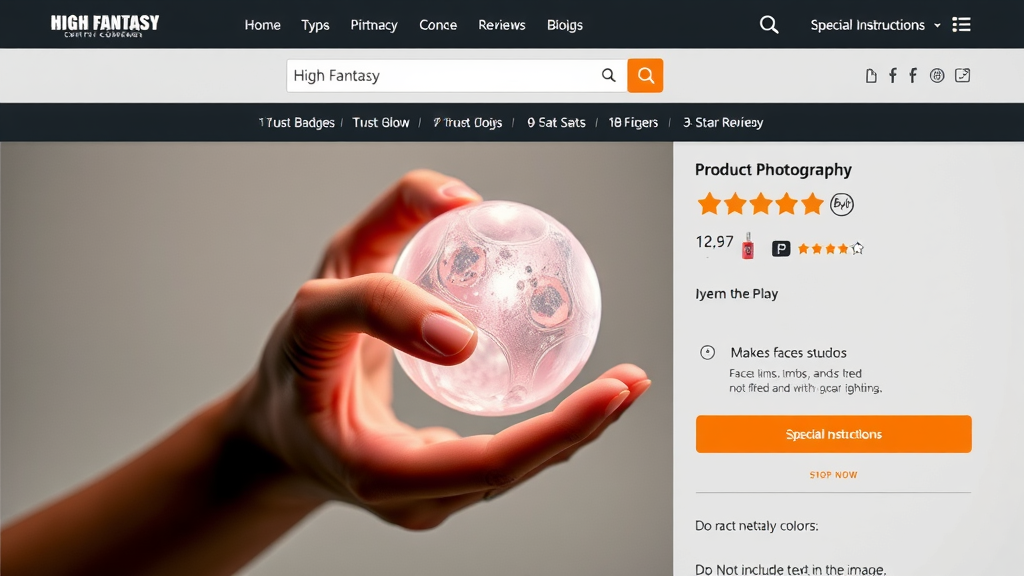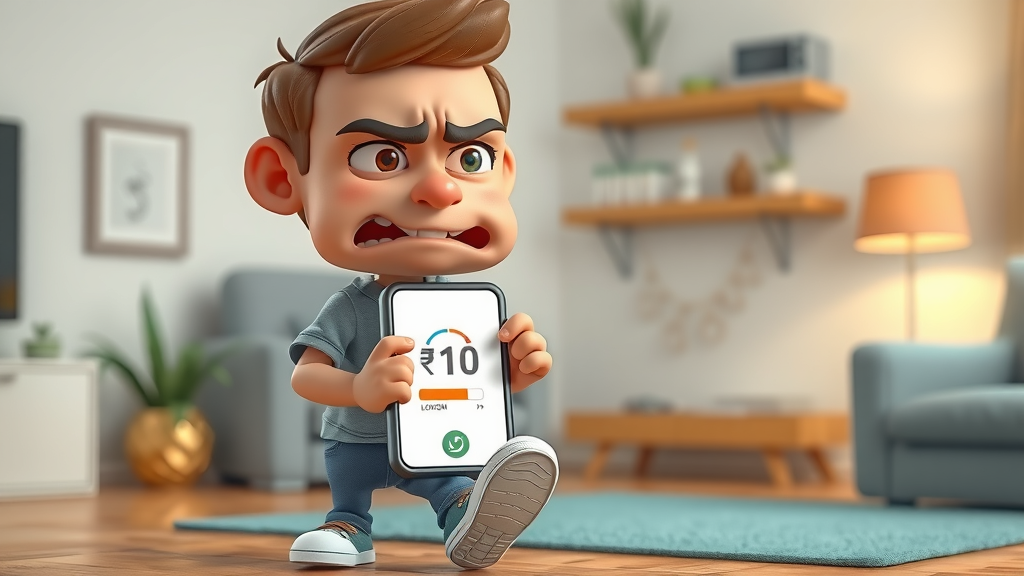Did you know that the average website conversion rate is just 2.35%? That means nearly 98 out of 100 visitors leave without taking a single valuable action. If you’re ready to beat those odds and unlock meaningful growth, it’s time to tap into powerful, data-driven conversion rate optimization strategies. In this guide, you’ll learn how conversion rate optimization goes beyond buzzwords to deliver tangible, sustainable improvements for your business—no matter your industry, audience, or website size.
Unlocking the Power of Conversion Rate Optimization: Surprising Statistics and Why Businesses Can’t Ignore It

Did you know that the average conversion rate for websites is just 2.35% ? That means nearly 98% of site visitors don’t take a desired action like making a purchase, signing up, or submitting a lead form. For businesses, this is more than a missed opportunity—it’s a costly gap you can’t afford to ignore. As the competition to attract site visitors intensifies, rate optimization becomes the lever that separates leading brands from the rest. By turning more visitors into customers, you boost marketing ROI without paying for extra traffic, giving businesses a clear path to sustainable growth.
Conversion rate optimization is not just about tweaking buttons or colors; it’s a comprehensive process of understanding user behavior, removing friction, and continually testing to improve conversion rates. In today's data-driven landscape, prioritizing CRO is essential for staying relevant and competitive. With just a 1% increase in conversion rates leading to thousands or even millions in extra revenue for many brands, it’s clear why companies large and small now prioritize it at the heart of their digital strategies.
Maximizing Success Through Effective Conversion Rate Optimization
Understanding conversion rate optimization starts with redefining what “success” means for your web page. Instead of focusing solely on the number of visitors , savvy marketers now measure how many take a desired action —whether it’s a purchase, a signup, or a share. This shift moves the target from just getting traffic to actually improving the outcomes of that traffic. Imagine a landing page that currently sees 1,000 visitors monthly, but only 25 become customers. By applying CRO principles—streamlining the flow, clarifying messaging, or adding social proof—you could double or triple that conversion rate with no additional advertising spend.

Conversion rate optimization transforms not only landing pages but product pages and even your overall business outcomes. Through CRO tests like A/B or split test experiments, you uncover what resonates with your website visitors and accelerate growth. For example, a well-optimized product page could see its conversion rates vault from 2% to 6% simply by incorporating more compelling images, clearer CTAs, or trust badges. Improved user experience is at the heart of it all, ensuring every change aligns with your target audience’s needs and expectations.
What You’ll Gain from Mastering Conversion Rate Optimization
- Clear understanding of conversion rate optimization (CRO) fundamentals
- Practical steps to improve conversion rates on landing pages and product pages
- Advanced CRO strategies for sustained growth
- Tools and tests to measure and prove conversion improvements
- Actionable insights from real-world case studies
Breaking Down Conversion Rate Optimization: Definition, Process, and Value
What is Conversion Rate Optimization?
Conversion rate optimization is the systematic process of increasing the percentage of site visitors who take a desired action on a web page, such as filling out a form or making a purchase. By understanding user behavior and running CRO tests , businesses maximize the value of every website visitor. This process relies on data and psychology to transform passive browsers into loyal customers—forging a direct pathway from website visitors to measurable results.

Key Components and Benefits of Rate Optimization
- Enhanced user experience on landing pages
- Higher conversion rates for product pages
- Driving more value from current website traffic
- Reduced cost per acquisition through better conversion optimization
| Metric | Industry Average | Top Performer Benchmark |
|---|---|---|
| E-commerce Conversion Rate | 1.84% | 5%+ |
| Landing Page Conversion Rate | 2.35% | 11.45%+ |
The Pillars of a Winning CRO Strategy: From Landing Page to Product Page
User Experience: The Foundation of Conversion Rate Optimization
At the center of every effective conversion rate optimization effort is a seamless, satisfying user experience . When site visitors find your site easy to navigate, trust your messaging, and feel confident in their next steps, conversions naturally follow. Focus on tactics like intuitive navigation, concise messaging, fast loading speeds, and clear calls-to-action. These factors reduce bounce rates and create a frictionless journey—encouraging users to reach your conversion goal .

Optimizing user experience also means eliminating distractions, streamlining forms, and using customer-centric language that guides rather than overwhelms. Remember, even small tweaks—like reducing form fields or clarifying your value proposition—can yield a measurable jump in conversion rates . A CRO strategy centered around user experience ensures both your business objectives and customer needs are strategically aligned for success.
Optimizing Your Landing Pages for Maximum Conversions
High-converting landing pages are the cornerstone of any strong rate optimization effort. To drive improve conversion rates, start by aligning every element on your landing page with a single, compelling objective. Remove distractions, highlight your unique value, and use engaging images or videos that reinforce your offer. For example, a clear headline, supportive subheadline, and a vibrant call-to-action button guide users toward your desired action .
Real-world examples show that companies optimizing their landing pages often experience double-digit increases in conversion rates . Simple changes—like switching from generic to benefit-driven CTAs, adding urgency, or incorporating testimonials—directly impact your average conversion rate. By systematically testing and refining, you ensure your landing page always reflects what resonates most with your target audience .
Essential Product Page Elements for Conversion Optimization
- Compelling product images and descriptions
- Clear value proposition
- Trust signals and reviews
- Seamless checkout experience

For e-commerce brands, the product page is where purchase decisions happen. Use high-quality photos, informative bullet points, and authentic customer ratings to win trust. Ensure that the path from product selection to shopping cart and checkout is smooth and inviting, minimizing effort at every stage. These enhancements drive a substantial lift in your conversion rates by reducing uncertainty and reinforcing credibility.
How to Optimize Conversion Rates: Practical Techniques for Every Web Page
A/B Testing and CRO Tests: Proving Conversion Rate Improvements
The backbone of effective conversion rate optimization is rigorous, ongoing testing—using A/B testing and other CRO tests. By presenting two page variants to your audience, you learn exactly which layout, copy, or offer yields higher conversions. Digital marketing leaders routinely run split tests across landing pages and product pages to prove conversion gains before rolling out changes widely. For example, a SaaS company might test two different signup forms, ultimately choosing the version that delivers a 20% lift in completed registrations.

Every website visitor action provides telling data points. Analyze the results of your CRO test to discover not just what works, but why. Serial testing, driven by curiosity and data, enables even modest websites to achieve massive gains—with some businesses doubling or tripling their conversion rates through a disciplined approach to experimentation.
Heatmaps, User Session Recordings, and Analytics: Insights for Continuous Growth
- Identify friction points with heatmap analysis
- Use session recordings to observe website visitors’ behavior
- Apply findings to improve conversion paths

Heatmaps visually reveal where users click, scroll, or hesitate on your web page, enabling you to pinpoint which elements attract attention and which cause confusion. Session recordings give a granular, real-time replay of actual user journeys—surfacing navigation troubles or dead ends that block conversions. Combining these insights with robust analytics, you pave the way for continuous iteration and ongoing rate optimization, ensuring your website adapts as user expectations and behaviors change.
Building High-Converting CRO Strategies
- Define your conversion goals and KPIs
- Set benchmarks for your average conversion rate
- Identify high-priority pages for optimization
- Run split tests and track results
- Iterate based on data
Optimizing for Different Types of Conversion Goals
E-commerce vs. Lead Generation: Tailoring CRO Techniques
Conversion goals vary—and so must your cro strategy . For e-commerce, the focus is on guiding users from product discovery through to a seamless shopping cart and checkout experience. Compelling visuals, real-time trust signals, and streamlined payment flows boost product page performance. In contrast, lead generation relies on persuasive forms, concise value messaging, and robust follow-ups. Successful rate optimization here depends on lowering submission barriers and immediately communicating benefits, directly addressing what matters most to your target audience at each step.

Mobile Conversion Optimization: Capturing On-the-Go Website Visitors
With over half of web traffic now from smartphones, mobile conversion optimization is no longer optional. Fast load times, click-to-call CTAs, and mobile-friendly navigation all play vital roles in increasing the number of conversions among on-the-go users. A responsive design ensures landing pages and product pages display cleanly across devices—from large desktops to compact mobile screens—making the journey from first visit to final conversion seamless no matter when or where visitors connect.
Common Conversion Rate Optimization Mistakes—and How to Avoid Them
Ignoring User Experience and Page Load Times

Delays and friction are the enemy of rate optimization . When site visitors wait for slow pages or struggle with buggy forms, even the best offer loses its effectiveness. Ensure your pages load within two seconds or less, images are compressed but sharp, and unnecessary scripts are removed. Every second saved helps reduce bounce rates and strengthens your user experience , opening pathways for higher conversion rates.
Failure to Define Conversion Goals and Target the Right Audience
Without clear conversion goals or an understanding of your target audience , even the most advanced CRO tools can’t guarantee success. Establish specific, measurable objectives for each web page—like boosting form submissions or increasing sales from a product page. Regularly update your user personas so your messaging, design, and offers resonate powerfully with the website visitors most likely to convert, turning wasted potential into consistent gains.
“You can’t optimize what you don’t measure. Start with clear goals, test relentlessly, and never stop improving.” – CRO Expert
Case Studies: Real Results from Data-Driven Conversion Rate Optimization
How a SaaS Startup Increased Conversion Rates by 115%
In one standout example, a SaaS company transformed their main landing page using data-driven experiments. By testing alternative headlines, tightening copy, and simplifying the form layout, they slashed friction for new sign-ups. Iterative CRO tests uncovered the magic combination—resulting in a 115% jump in conversion rates in less than three months. This remarkable turnaround shows how continuous optimization and strategic experimentation can drive rapid business gains.

Retailer Doubles Product Page Revenue Through Strategic CRO
| Change Implemented | Before Conversion Rate | After Conversion Rate |
|---|---|---|
| Added trust badges | 2.1% | 4.8% |
| Improved images | 1.8% | 3.9% |
Key Metrics: Measuring the Impact of Conversion Rate Optimization
Tracking Average Conversion Rate and Other Essential KPIs
To prove conversion rate improvements, focus on key performance indicators like average conversion rate , cost per acquisition (CPA), customer lifetime value (CLV), and bounce rate. Monitoring these metrics gives a holistic view of your optimization efforts. For example, a declining CPA and a rising conversion rate signal that your web page and landing page improvements are working. Complement these with goal tracking for all main user actions and regular reviews of funnel drop-offs to ensure no conversion opportunity is missed.

Setting Up Analytics and Reporting to Prove Conversion Rate Improvements
- Google Analytics and event tracking
- Conversion goal configurations
- Reporting dashboards for easy visualization
Top Tools and Software for Streamlined Conversion Rate Optimization
Industry-Leading CRO Tools for Every Budget
- Google Optimize
- Optimizely
- Hotjar
- VWO
- Crazy Egg
Choosing the Right Tool for Your CRO Strategy
With dozens of software options for conversion rate optimization , it’s important to match your budget, business needs, and technical skill. For example, Hotjar excels at heatmaps and session recordings, while Optimizely specializes in robust split testing and experiment management. Compare tools by evaluating core features—such as A/B testing capabilities, analytics integrations, and user support—so you can confidently select the platform that fits your unique CRO strategy.
Frequently Asked Questions on Conversion Rate Optimization
What is conversion rate optimization?
Conversion rate optimization (CRO) refers to the process of improving your website experience to increase the percentage of visitors who complete a desired goal, from product purchases to form submissions.
How to optimize conversion rates?
Begin by analyzing your current web page metrics, identifying friction points, and running data-driven A/B tests designed to improve key elements such as design, messaging, and user experience.
What is CRO and SEO?
CRO focuses on enhancing on-site performance and user interactions to increase conversions, while SEO drives more qualified website visitors by improving organic visibility. Both strategies work best when used together.
What are the six primary elements of conversion rate optimisation?
The six core elements of CRO include call-to-action optimization, web page design, messaging and persuasive copy, page speed, trust signals, and continual data analysis/testing.
People Also Ask: Conversion Rate Optimization Insights
What is conversion rate optimization?
Conversion rate optimization is the structured process of increasing the percentage of site visitors who complete a specific goal—boosting your marketing ROI without spending more on traffic.
How to optimize conversion rates?
Use analysis, testing, and continual improvements—from headline tweaks to streamlined forms—to turn more of your website visitors into customers.
What is CRO and SEO?
CRO (Conversion Rate Optimization) is making your site work harder for every visitor, while SEO (Search Engine Optimization) is about getting more visitors. Combine both for best marketing outcomes.
What are the six primary elements of conversion rate optimisation?
CRO success relies on optimizing user experience, calls-to-action, visual hierarchy, trust signals, messaging, and robust A/B testing methodologies.
Elevate Your Business with Proven Conversion Rate Optimization Tactics
Take the next step toward business growth by applying these conversion rate optimization strategies . With powerful methods, data-driven tests, and a relentless focus on your website visitors, you can unlock transformative results. Start implementing your CRO action plan today and watch your conversion rates—and business—soar.
Act now: Identify your high-impact pages, define clear conversion goals, start testing changes, and measure results—you’ll see powerful, repeatable gains.
Sources
- WordStream – https://www.wordstream.com/blog/ws/2014/02/10/average-conversion-rate
- Optimizely – https://www.optimizely.com/optimization-glossary/conversion-rate-optimization/
- Crazy Egg – https://www.crazyegg.com/blog/conversion-rate-optimization/
- Hotjar – https://www.hotjar.com/conversion-rate-optimization/
- Neil Patel – https://neilpatel.com/what-is-a-good-conversion-rate/
To deepen your understanding of conversion rate optimization (CRO) and implement effective strategies, consider exploring the following authoritative resources:
- “Conversion Rate Optimization (CRO): Definition & Best Practices” ( forbes.com )
This article provides a comprehensive overview of CRO, including essential strategies such as removing distractions, improving page load speed, and learning from high-converting content.
- “Conversion Rate Optimization: 17 High-Impact Strategies” ( wordstream.com )
This resource outlines 17 actionable strategies to enhance your website’s conversion rates, covering aspects like optimizing mobile experience, keeping essential elements above the fold, and making your CTAs stand out.
By delving into these resources, you’ll gain valuable insights and practical techniques to effectively boost your website’s conversion rates.
 Add Row
Add Row  Add
Add 










Write A Comment